Reviews
From Auschwitz Drawings to Teddy Bears, ‘The Keeper’ Studies the Desire to Preserve
The impulse isn't just about amassing material possessions.

The impulse isn't just about amassing material possessions.

As museum acquisitions grow, and amid a ballooning number of museums around the world, New York’s New Museum has mounted a show centered around the practice of collecting. The museum itself doesn’t collect, so the show may come with a dose of irony; the curators may intend, with this sprawling show, a knowing nod to the museum enterprise itself. Might the acquisitive urges of business-suited boards of trustees be so distinct from those of the hoarder in apartment 2B?
But “The Keeper” isn’t just about collecting, and it’s not only about art. Through thousands of artworks and other artifacts, it explores the impulse to preserve, archive, and protect objects, and suggests blurred lines between benign and destructive forms of classification. Organized by artistic director Massimiliano Gioni along with associate curator Margot Norton and assistant curators Natalie Bell and Helga Christoffersen, the show extends throughout most of the museum’s galleries.
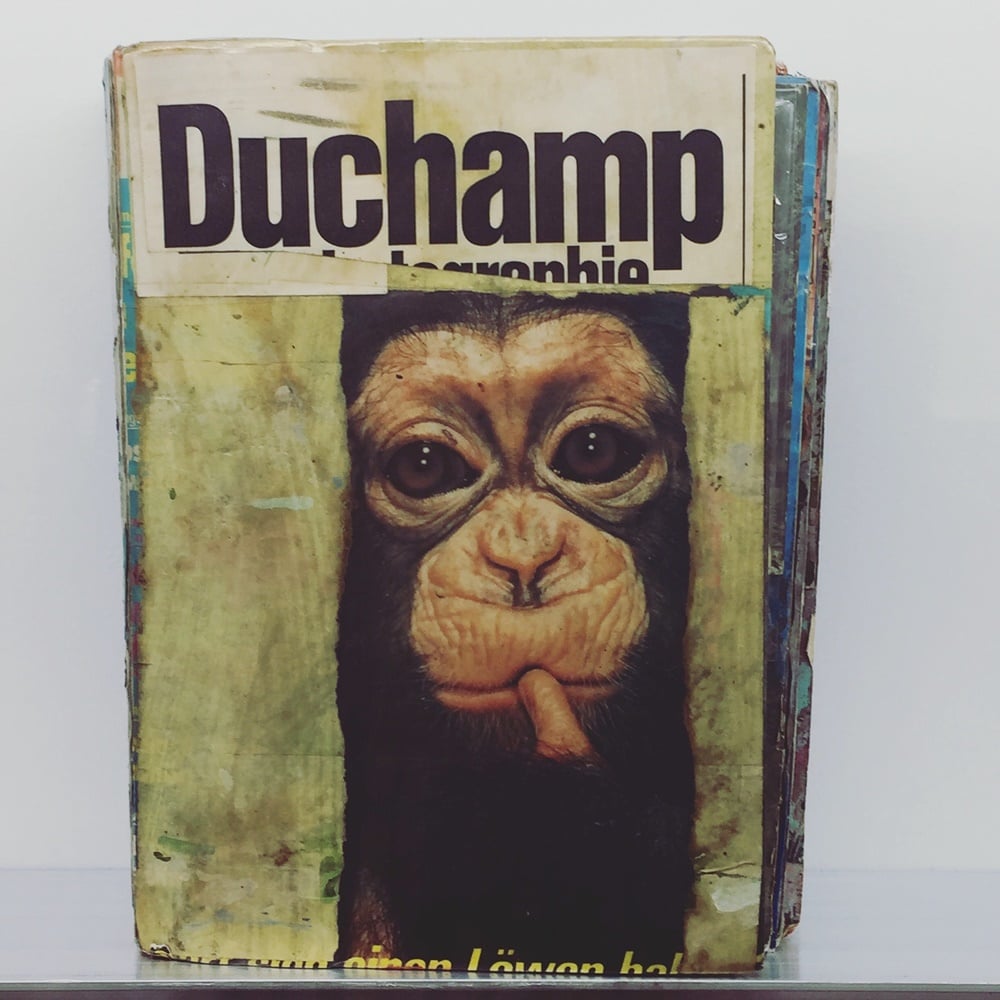
A scrapbook by Shinro Ohtake, from between 1979 and 2012. Photo Brian Boucher.
In a catalogue essay, Gioni touches on the psychology of collecting via the example of his own library. In a striking confession, Gioni conveys the realization “that what I am trying to hide behind these books might be the thing I fear the most—my absolute, impenetrable ignorance.” The notion of collecting as a bulwark against vulnerability—not only against personal lack but against decay and mortality itself—carries throughout the show.
As if in some kind of compensation, the show itself is gigantic. While its tally of individual works exceeds 4,000, the number of discrete objects it contains is far greater. A piece by Vanda Vieira-Schmidt alone, for example, includes some 300,000 drawings, while an installation by Ydessa Hendeles includes thousands of photographs; that’s just two examples, so the number of individual items now inhabiting the museum may rest somewhere closer to a half-million. The overwhelming experience suggests what it might be like if a museum had simply brought everything out of storage, all at once.
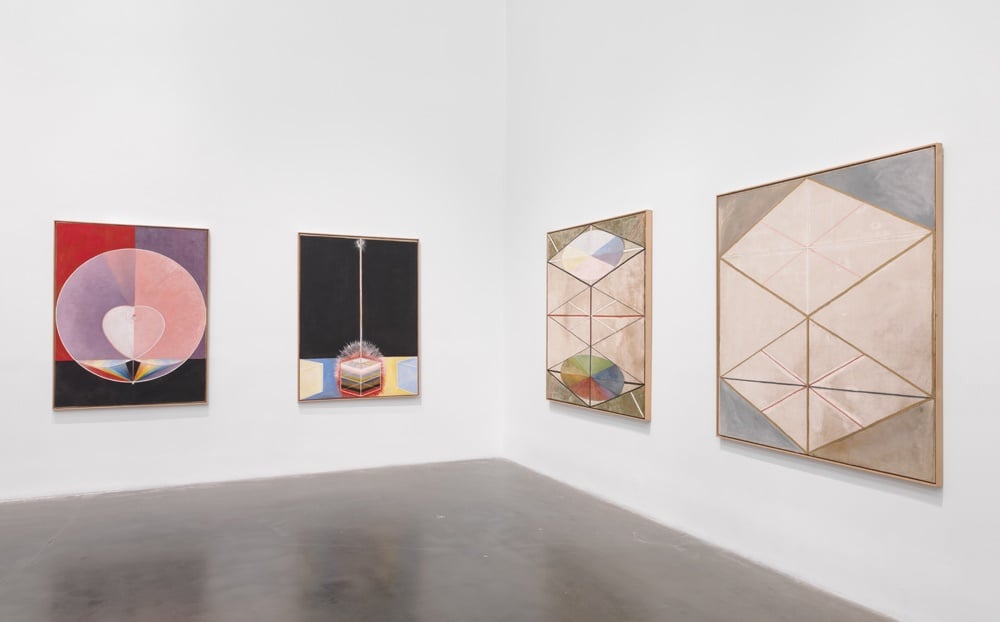
Paintings by Hilma af Klint. Photo Maris Hutchinson/EPW.
The theme extends broadly, to include not only amassments of objects but also artworks inspired by others’ possessions as well as artists’ own collections. In the latter category, it includes the achingly beautiful proto-abstract paintings of visionary Swedish painter Hilma af Klint; they’re here because she dictated in her will that they be kept together and not displayed for decades after her death.
The theme overlaps with cataloguing, including botanist/artist Korbinian Aigner’s paintings of various types of apples; amateur photographer Wilson Bentley’s pioneering studies of the structure of snowflakes; insurance clerk Peter Fritz’s charming little models of Swiss architecture; and Vladimir Nabokov’s notes relating to his butterfly collection. (Though largely focused on Europe and North America, the exhibition does include a few exceptions from places like Brazil, Japan, and China, which makes one wonder what an even larger show might illuminate about the different meanings of accumulation of objects in varying cultures.)
By contrast to the benign examples of accretion included in the show, war casts a long shadow over the exhibition, with the unthinkable destruction of World War II and the Holocaust exerting a particular influence.
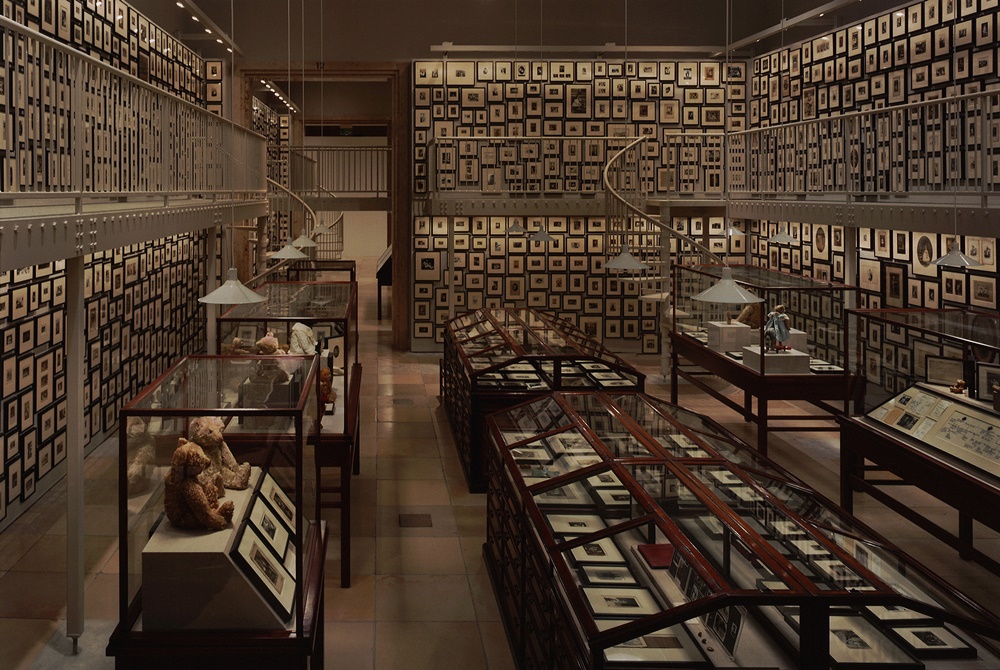
Ydessa Hendeles, Partners (The Teddy Bear Project), 2002. Courtesy Ydessa Hendeles and the Ydessa Hendeles Art Foundation, Toronto.
The show’s psychological linchpin could be said to reside in its most theatrical piece, a large installation by Hendeles. The child of two Auschwitz survivors, the artist refers to all her work as a “post-Holocaust document,” as she once told the Guardian. On view here is her “Teddy Bear Project,” which brings together a massive collection of antique photographs that include these fuzzy objects. The thousands of images, lining the walls and on view in antique-style display cases, are accompanied by numerous dolls themselves, in a high-ceilinged room with elevated walkways reached by spiral staircases.
With her background in psychoanalysis, Hendeles takes an interest in the teddy bear partly because of its status as a “transitional object,” one that a small child can form a relationship with to compensate as she or he is weaned away from the mother. Hendeles thus suggests the Freudian root of every collection, including, presumably, her own.
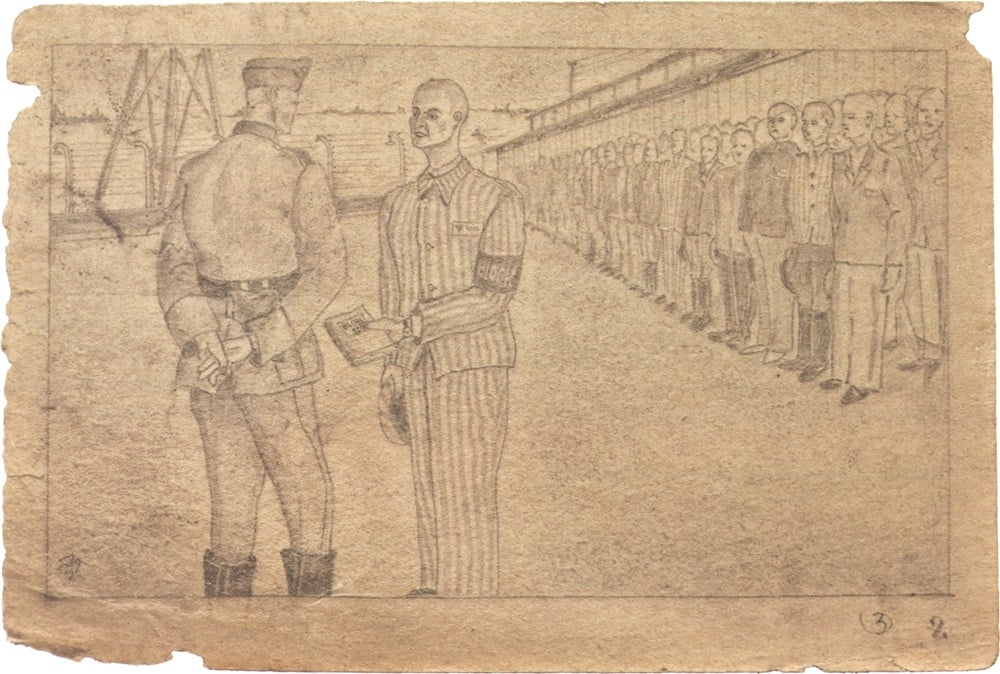
MM, The Sketchbook from Auschwitz, 1943. Courtesy Auschwitz-Birkenau State Museum.
Among the most affecting works in the show are a set of drawings by an Auschwitz inmate known only as MM. Found tucked away in a wall after liberation, the scraps of paper show Jews’ experiences at the camp, from when they arrive by train, relatively hardy, to when they are hanged or shot and their withered bodies carted away. They’re an agonizing strike back by the powerless at the Nazis’ will to obliterate, and a moving example of how the desire to preserve can be about more than just acquiring material things.
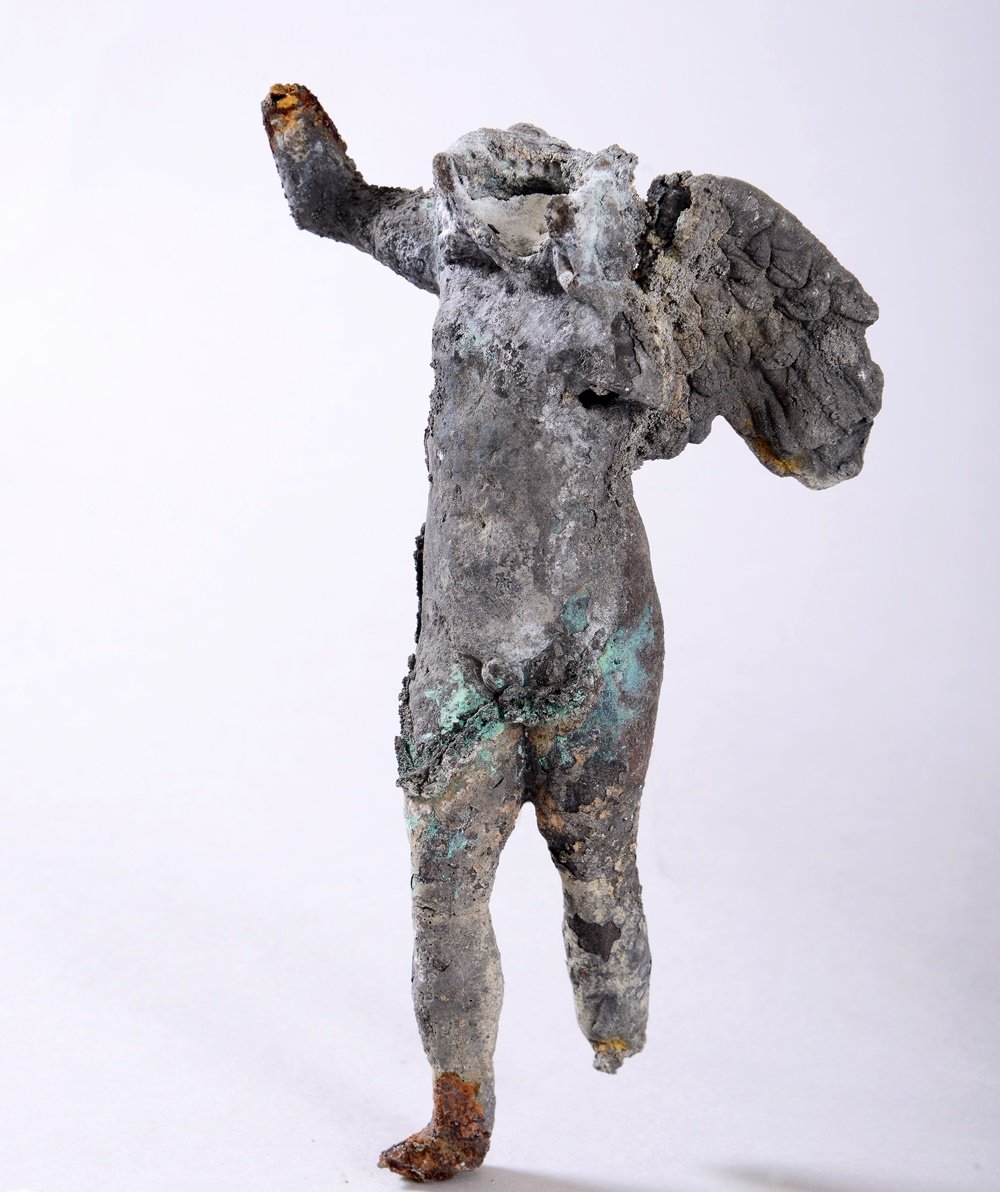
An artifact from the National Museum of Beirut, damaged during the Lebanese Civil War. Courtesy the Ministry of Culture and Directorate General of Antiquities, Lebanon.
Conflicts with fewer casualties play a role in the show, too. Tucked away in a tiny gallery off a staircase at the rear of the museum are several objects from the National Museum of Beirut that sustained damage during the Lebanese Civil War, which killed an estimated quarter of a million people between 1975 and 1990. The museum found itself along the front lines of the protracted conflict, and despite the heroic efforts of one government minister, many of its holdings sustained serious damage, some artifacts even being fused together by fire. We think of museums as strongholds; the Beirut museum provides a sad example of how man’s destructive drive imperils even these treasuries.
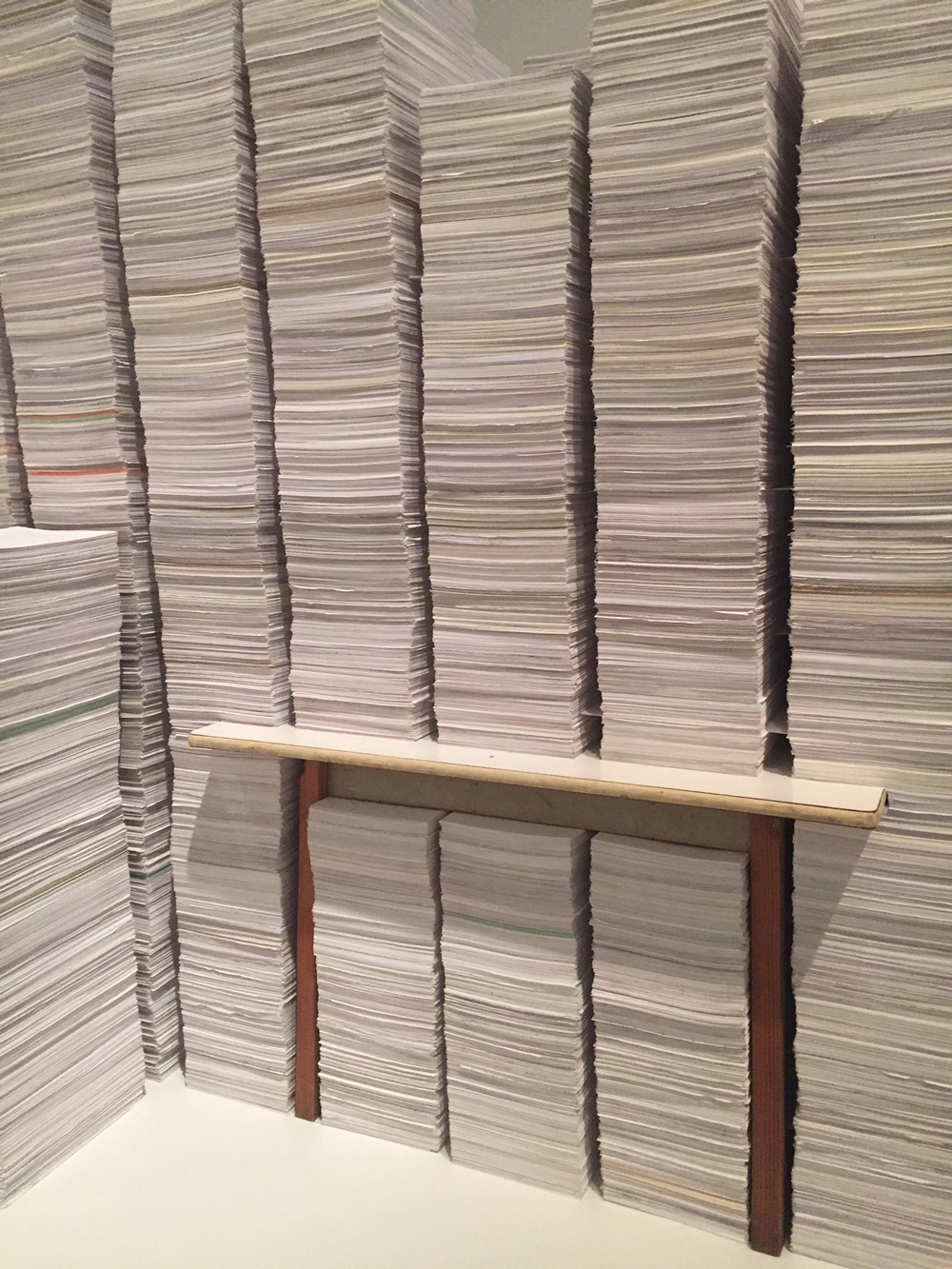
Vanda Vieira-Schmidt, World Rescue Project, 1995–ongoing. Photo Brian Boucher.
Against such a backdrop of destruction, Vieira-Schmidt’s 300,000 drawings, part of her “World Rescue Project,” are especially touching. A resident in an in-patient mental healthcare facility for years now, Vieira-Schimdt holds her drawings to be defenses against demons who plan to torture humanity, and maintains that the German Defense Ministry can use codes within them to resolve global conflicts. The drawings are stacked nearly to the ceiling in a small gallery, completely swamping the desk and chair with which they’re displayed.
The drawings now number nearly 600,000, and she continues to crank out hundreds each day. At times like these, one can only hope they’re helping.
“The Keeper” is on view at the New Museum, New York, through September 25, 2016.